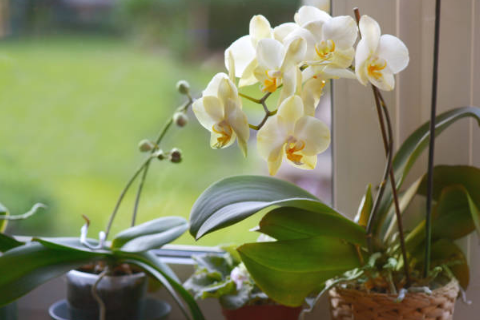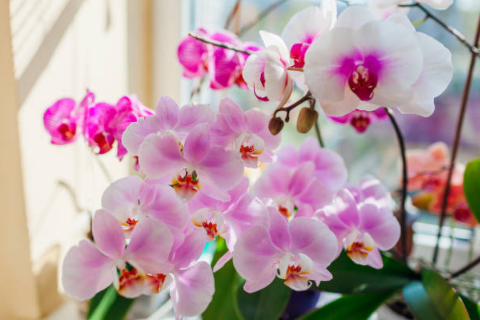If you’re new to plant care, you’ve probably run into a few frustrating issues—wilting leaves, root rot, or plants that just won’t bloom. These problems can be discouraging, especially when you don’t know how to fix them. But don’t worry! I’ve put together a list of the 10 most common plant care problems, and if you learn how to handle them, you’ll become a true houseplant pro. Most issues can be prevented—or easily solved—if you know what to do.
1. How Do You Water Plants Properly?
Watering is by far the most common issue—most plants die from overwatering, not underwatering. The key is to understand your plant’s natural habits.
-
If your plant loves moisture (like gardenias), water it thoroughly as soon as the top 1–2 cm of soil feels dry.
-
If your plant is drought-tolerant, wait until the soil is almost completely dry or fully dry before watering deeply.
Proper airflow is also crucial. Without ventilation, wet soil stays soggy and causes rot.

2. How Should You Fertilize?
Potted plants rely on limited soil nutrients, so over time, they’ll need help. The approach depends on the type of plant:
-
Foliage plants: Use a fertilizer high in nitrogen (N) with a balanced mix of other nutrients, like a general-purpose liquid feed.
-
Flowering plants: For plants that bloom repeatedly, choose a fertilizer high in phosphorus (P). For single-season bloomers, apply phosphorus-potassium fertilizer (like monopotassium phosphate) before the flower buds form. After blooming, switch to a balanced fertilizer.
Don’t fertilize too often—once or twice a month is usually enough. Always dilute it a little more than recommended.
3. Can Plants Be Exposed to Sunlight?
Most plants love sunlight, but the intensity matters.
-
Shade-loving plants like orchids, peace lilies, and ferns do best in indirect or filtered light. Avoid harsh midday sun.
-
Flowering plants like bougainvillea and hibiscus thrive with full sun exposure—at least 6 hours a day.
Learn your plant’s sunlight preferences. Even shade plants need a bit of light—just not direct sun.
4. What If the Roots Start Rotting?
Root rot is often caused by poor ventilation and overwatering. If you notice mushy roots or dying leaves:
-
Trim off damaged leaves to reduce stress.
-
Remove the plant from its pot, wash off the old soil, and cut off rotted roots.
-
Replant it in fresh, well-draining soil.
-
Ensure good airflow and avoid overwatering while it recovers.
Use a fungicide occasionally as a preventative measure.
5. Can You Use Regular Garden Soil?
Yes, but it depends. Garden soil is fine if you’re growing outdoors or have excellent ventilation.
However, garden soil tends to be heavy, nutrient-poor, and may compact easily. You’ll need to:
-
Mix in compost or fermented organic fertilizer (like cow or sheep manure).
-
Add sand or perlite to improve drainage.
-
Topdress occasionally with organic matter to keep it from becoming hard and compacted.

6. Is a Big Pot Better?
Nope! Using a pot that’s too large is a common rookie mistake. If your plant is small, a big pot holds too much soil, which retains excess water and can cause root rot.
Choose a shallow, well-draining pot that matches the plant’s current size. Once the plant outgrows it, size up gradually.
7. Can You Let Your Plants Get Rained On?
It depends. If your soil drains well and doesn’t stay soggy, occasional rain is fine. But avoid letting flowering plants get rained on—they’ll drop blooms early.
In summer, avoid sudden rain exposure. Hot soil and cold rainwater can shock the roots. If there’s continuous rain in the forecast, move your plants to a sheltered spot.
Bonus tip: Collect rainwater and use it later to water your plants—it’s soft and mineral-rich!
8. What If the Plant Won’t Bloom?
There are three main reasons:
-
Lack of phosphorus – flowering plants need phosphorus to form flower buds. Use bloom boosters like monopotassium phosphate.
-
Wrong pruning time – For example, don’t prune hydrangeas or camellias in fall—they bloom on old wood.
-
Too little sunlight – Most bloomers need strong light. Place them where they’ll get at least several hours of direct sun per day.
9. Why Are the Leaves Turning Yellow?
Yellow leaves can result from:
-
Overwatering or waterlogged soil
-
Nutrient deficiency (especially nitrogen or iron)
-
Too much direct sun for shade plants
-
Soil that’s too alkaline for acid-loving plants like gardenias or citrus
Check your watering habits, light exposure, and consider adding iron supplements or acidifying agents if needed.
10. What Causes Leaf Rot?
Leaf rot usually means high humidity and poor airflow. Watering all your plants at once in a small space traps moisture and promotes fungal growth.
Also, low leaves in contact with wet soil are prone to rot. Use a fan on rainy or humid days and avoid overcrowding your space.
By learning these ten plant care essentials—watering, feeding, potting, pruning, and managing light and disease—you’ll be ready to tackle most houseplant issues before they start. Know your plant’s natural preferences, and you’ll be on your way to thriving, blooming success.

